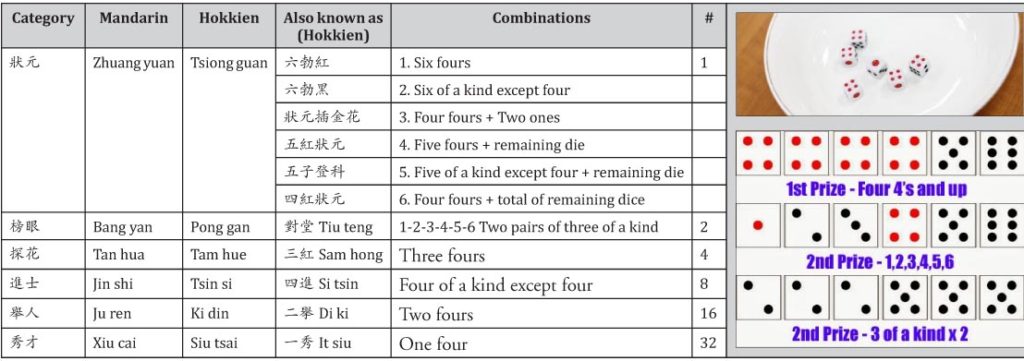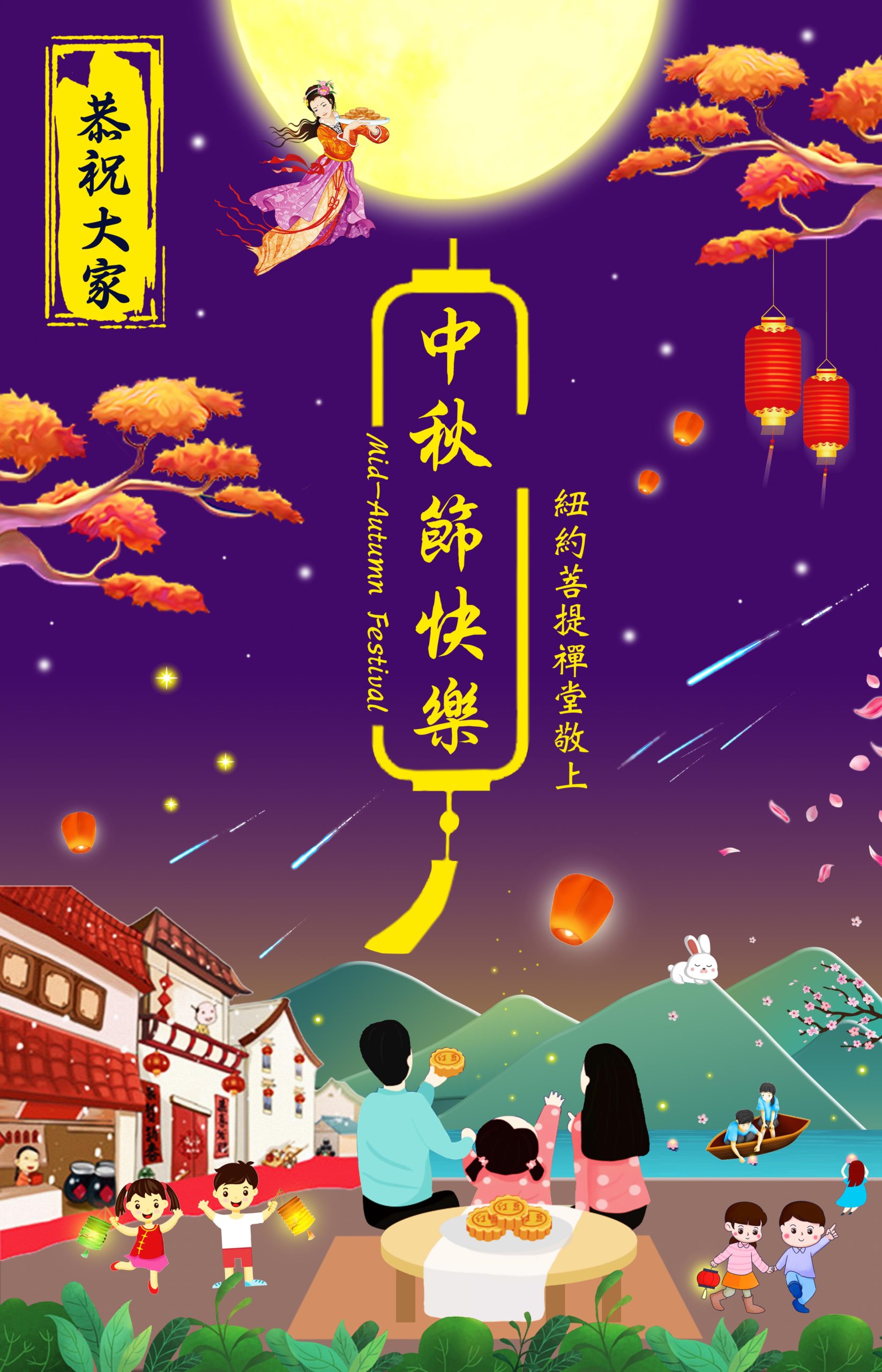The Mid-Autumn Festival or Moon Festival (中秋節) is one of two occasions during the year when Tsinoys are reminded of their Chineseness (the other is the Spring Festival or lunar new year). This is when all our Filipino friends would remind us to give them mooncakes. So familiar are they with the festival that Filipinos now know the exact date of the Mid-Autumn Festival, thanks to Google. The 15th day of the eighth lunar month falls on Oct. 1, this year.
During the Moon Festival, aside from family gatherings, we get to meet old friends, former classmates and officemates, since this is the occasion for coming together to share food and to play a round of the dice game.
Amidst the commercialism that accompanies this festivity, many have forgotten the real essence of this important event. The Chinese have celebrated a successful harvest during the autumn full moon as early as the Shang Dynasty (16th-10th BC). Since the eighth month is the middle of autumn and the 15th is the middle of the month, it was called Zhong Qiu (仲秋) which literally means middle of autumn. The Chinese character 仲 was later changed to 中.
During the Tang Dynasty (618-907), Mid-Autumn became a fixed festival. The Chinese started giving mooncakes as a gift during the Yuan Dynasty (1271-1368).
On this night, when the moon is at its brightest and fullest, the olden Chinese gathered around the courtyard (in the case of Tsinoys, garden or roof deck) enjoying mooncake while admiring the moon. Some would first offer the mooncake to the Moon Goddess, Chang’e. The mooncake is then cut into pieces and distributed, starting from the eldest member of the family to the youngest. If a member is absent, a piece is still allotted for him, expressing completeness of the family. Thus, it is also called Reunion Festival (團圓節). For members of the family who are away from home, a glimpse of the moon reminds them that other family members, wherever they are, will be looking at the same moon that night.
There are many stories associated with the Moon Festival. Let me share two that were told to us in school.
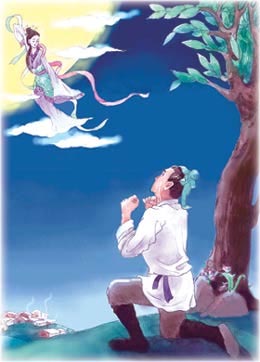
Houyi and Chang’e
Houyi (后羿)was the god of archery. At the time, there were 10 suns, all sons of the God of Heaven (天帝). The sons took turns as the sun but then they got bored and decided to come out at the same time. The heat on earth became so intense that crops withered, lakes dried up and animals died in exhaustion. The people suffered.
Houyi was assigned by Emperor Yao (堯) to convince the sons to stop their mischief. His plea fell on deaf ears, so with his bow Houyi shot down nine of the suns, leaving one. For his act, he was praised as a hero but incurred the ire of the gods and he was banished from heaven and stripped of his immortality.
The Queen of the West (西王母)took pity on Houyi and gave him her last two vials of elixir for him and his wife Chang’e (嫦娥) to regain immortality.
One night while Houyi was away, Chang’e got bored and out of curiosity drank the two vials. Immediately, she felt light and started to ascend to the moon. She regained her immortality but forever lived alone in the moon with only a rabbit (玉兔) as companion. She became the Goddess of the Moon.
Nowadays, children are asked to look for Chang’e and her rabbit as they eat mooncake during the festival.
Rebellion against the Mongols
The Mongol rule in the Yuan Dynasty was harsh and oppressive. Majority of the Chinese, who were from the Han tribe, plotted rebellion after rebellion headed by Chu Yuan Zhang (朱元璋). His military strategist, Liu Bo Wen (劉伯溫), devised a plan where secret messages of an impending rebellion on Mid-Autumn Festival were hidden inside mooncakes. That night, people responded to the call and together launched a successful rebellion against the Mongols that led to the start of the Ming Dynasty (1368-1644). Chu became its first emperor.
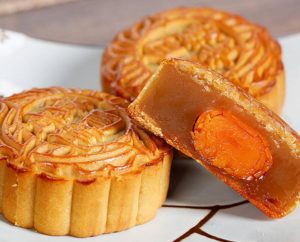
Mooncake
Today, these stories are hardly mentioned anymore but the Moon Festival is associated with feasting, eating mooncake and playing the dice game.
The sweetness of the mooncake blended with the saltiness of the duck egg is best eaten with a cup of hot tea. And has anyone cared to appreciate the decorative patterns and words molded on the crust? The mooncake has also evolved to different sizes, shapes and flavors in the recent years. From the original mung beans, black beans, lotus seeds, mixed nuts with ham, we now have variants with pandan, ube, chocolate, coffee, tiramisu and even with pork floss, rose petals, caviar or foie gras inside.
Dice game
In the Philippines, the celebration is never complete without the dice game. Though very popular here, this game is known only in Fujian and Taiwan. The dice game was conceived during the Qing Dynasty (1644-1911), while Zheng Cheng Gong (鄭成功Koxinga) was fighting against the Qing government in the hope of reviving the Ming Dynasty.
When Zheng’s troops retreated to Jinmen (金門), Taiwan, in order to keep up the morale of the soldiers against homesickness during the Moon Festival, a general by the name Hong Xu (洪旭) invented the dice game. The game is known in Hokkien as pua tiong chiu (博中秋). The game requires a bowl, six dice and 63 prizes divided into six categories. The categories (in Mandarin) are based on imperial examination titles: sixth prize Xiu Cai is a scholar in the county, fifth prize Ju Ren is a provincial examination passer, fourth prize Jin Shi is the metropolitan examination passer, third prize Tan Hua is the 3rd highest passer in imperial examination, second prize Pang Yan is the second highest and first prize Zhuang Yuan is the champion in the imperial examination.
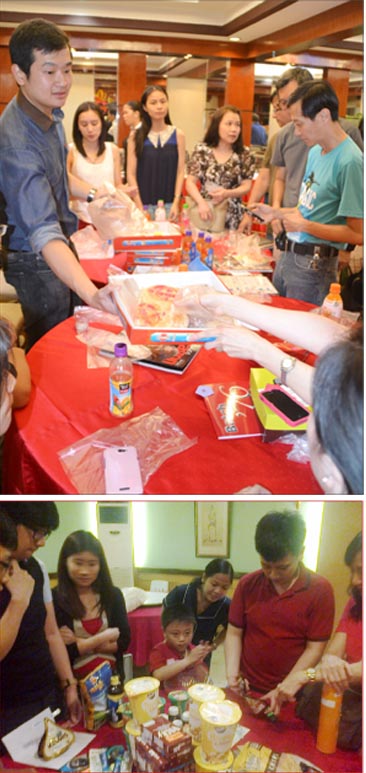
Prizes may vary from different sizes of hopia or varieties of goodies, especially for the children. Today, some families give cash as prizes. A set of this game can be bought from the hopia store.
When I was young, all our prizes were different sizes of hopia from the smallest 2-inch hopia to the largest 10 inches in diameter. These days, prizes range from junk food, office supplies to home appliances.
If you need to purchase prizes, as a rule, set a budget for the prizes. Divide the budget by six which will give you the budget for each category.
A total budget of P6,000 means P1,000 per category. Then divide the category budget by the number of prizes in each category (see table), that is the price of each item in that category. That is the general rule, but this shouldn’t stop you from preparing more prizes for each category.
Now, bring out your ceramic bowl, dice and let’s start the game, referring to the rules below.
Rules may vary. In my high school days, a classmate rolled a combination of six of a kind and it started a debate whether he should get first prize or tsong chiang (winner takes all in Hokkien). There are also disqualification rules when one of the dice tilts or when it rolls out of the bowl. So, in order not to spoil the fun, set the rules before the game starts.
To determine who starts the game, roll the dice, get the sum and count from the person who threw the dice clockwise or counterclockwise.
If you want to be more creative, choose the person with the longest hair, the thinnest, the youngest or the oldest to start the game.
Traditionally, the first prize winner provides the first prize for next year’s dice game. A friend’s mother provided a gold pendant as the first prize in their family dice game. The winner gets to keep the pendant for a year and has to relinquish it the next year. What he gets to keep is the luck for winning first prize.
More than winning, it is the fun of sharing and bonding with family and friends.
And before you call it a night on Mid-Autumn Festival, take a moment to look at Chang’e and her rabbit at 5:05 p.m. (ET) Oct. 1, which is 5:05 a.m. on Oct 2, Manila time.
